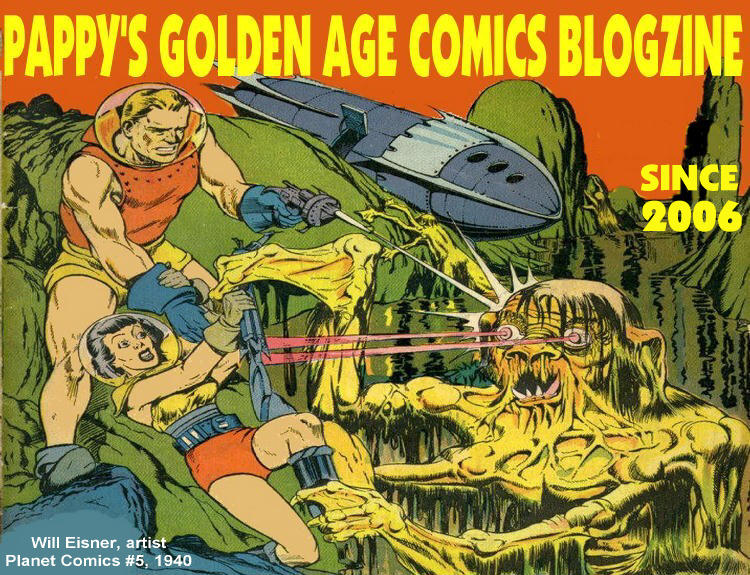
Number 898
Boss Tweed
The story--to me, anyway--isn't that with his drawings cartoonist Thomas Nast helped bring down the New York Tweed political ring in the 1870s, but that 140 years later the kind of corruption practiced by Tweed and his Tammany Hall gangsters is still going on in places around the country.
This story doesn't show Nast, but mentions him. Here are a couple of his Tweed cartoons, which helped people of the time recognize the “boss”. Do you think Tweed really had that remorse filled soliloquy in his cell as shown in that last panel? In a perfect world, maybe.

 “Boss Tweed”, attributed to Dan Barry-with-a-question-mark by the Grand Comics Database, is from the 1948 Real Clue Crime Stories, Vol. 3 No. 2.
“Boss Tweed”, attributed to Dan Barry-with-a-question-mark by the Grand Comics Database, is from the 1948 Real Clue Crime Stories, Vol. 3 No. 2.








2 comments:
My first guess was Dan Barry, too. Compare it to the political pamphlet he drew on my blog called 'Big Talk'. That is pure Barry.
I agree with you, Ger.
The artist isn't in question, but the writer's choice of dialogue is. I'm puzzled by "peepul's cherce" in panel 2. It's an attempt at a New York dialect, which sometimes substituted an "er" sound for an "oi" (and vice versa*), but why "peepul's"? I pronounce the word "people's"--and I live over 2000 miles from New York City--the same way as the phonetic "peepul's" so why the deliberate misspelling? I guess the scripter thought he was being cute, but it was unnecessary to make his point.
*From the Humbug parody of My Fair Lady: "I yearn to learn to earn more coin to burn," and in a New York dialect, "I yoin to loin to oin more kern to boin."
Post a Comment